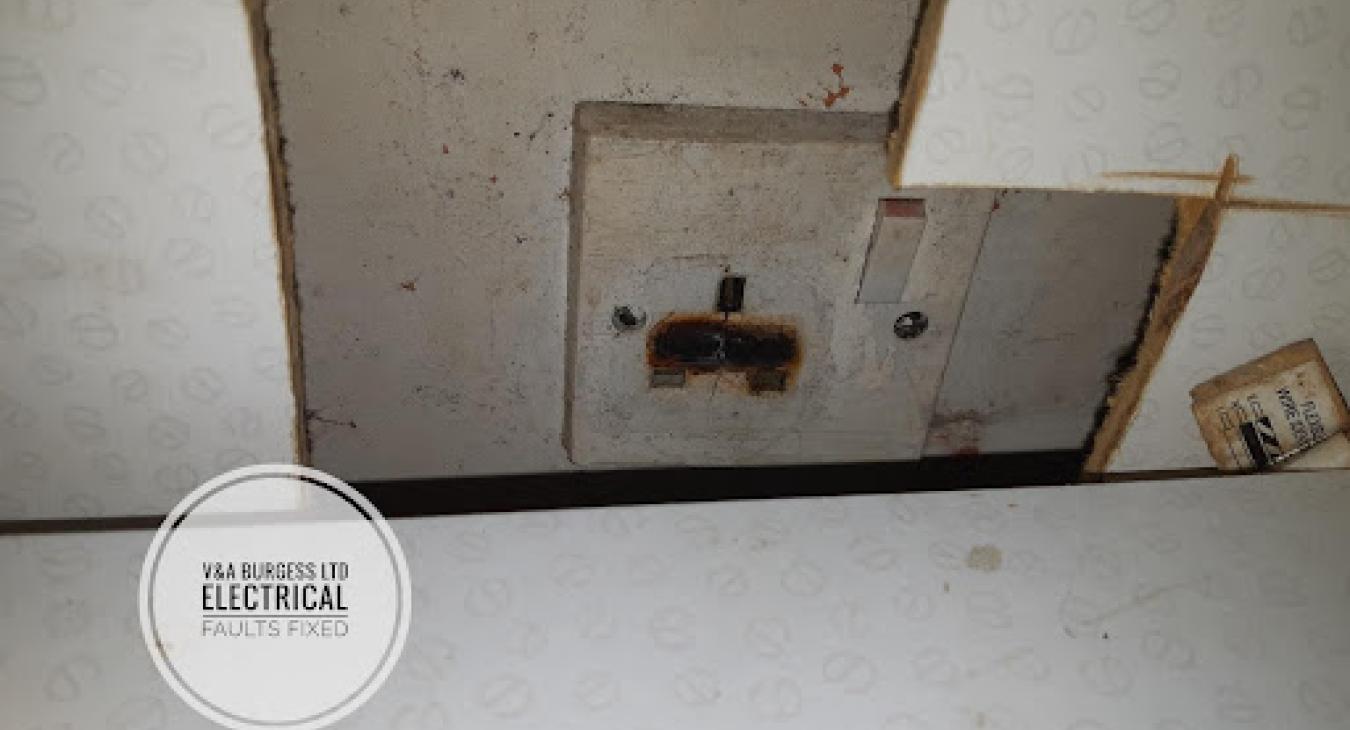
1) What would cause a plug to get warm?
Pictured here we have a socket that has suffered some damage from overheating and burning. Plugs are normally the cause for this type of damage.
What is a plug?
A plug is the means of connecting an electrical appliance to the power in your home. In this case the plug at the end of the appliance connects into the plug socket (pictured here) and then gains the connection to the electricity supply from the socket.
Plugs are normally plastic or PVC moulded construction and normally contain three pins which slot into a plug socket. Inside an electrical plug there is a fuse, or at least most of the time there should be. Occasionally in cheap import plugs from other parts of the world there are no fuses and often the plugs are designed dangerously giving an increased risk of electrical danger.
The fuse inside a plug is designed to blow when there is a problem with the appliance rather than relying on the mains trip switch or fuse.
The size of a fuse in a plug will vary depending upon the appliance the plug and cable are protecting and powering.
Back to top2) LITTLE BIT OF SCIENCE HERE SORRY!!!!
Fuse ratings are given in amps.
An amp is a unit of electrical current.
As an example, 50 modern LED light bulbs will typically require 1 amp of current.
In a table lamp there will usually be a 3 amp fuse. A 3 amp fuse will allow a lot more power to the lamp than the lamp actually draws but that’s ok. The fuse is there to protect the cable to the appliance and to aid in the event of an electrical fault.
In a kettle there will often be a 13 amp fuse. This is a bigger fuse than the table lamp as the kettle requires much more power and therefore a bigger fuse and a thicker cable is needed to allow the full power to be drawn safely.
Under normal operation, plug tops should not get excessively warm or hot.
As an appliance uses power, an electrical current flows through the fuse. This causes the fuse to get warm and in turn can warm up the plug and the socket.
Back to top3) How warm is too warm?
All electrical cabling and accessories have a safe operating temperature and under normal circumstances this is never exceeded. The electrician that designed and installed your electrical system in your home would have made some electrical design decisions based on calculations to ensure that your electrical needs never exceeded the capabilities of your electrical system preventing overheating and risk of fire. HOWEVER, there are occasions when things can go wrong.
High powered appliances and plug tops can join forces with worn out sockets, loose connections and overuse to cause overheating!
For instance, a plug top with a 13 amp fuse can only handle 10 amps continuously. What does this mean? Well, it means that whilst the fuse will allow 13 amps to pass safely it will warm up whilst this happens and if the appliance or electrical equipment is using 13 amps for a long period then the plug top or fuse may get warm or quite hot!
Did you know that a 13 amp fuse will actually allow 20 amps to pass through without ever blowing?
This is a problem.
We regularly see 13 amp fuses used for immersion switches and double sockets in kitchens that power two heavy power hungry appliances. These burn out regularly and damage wiring behind and the solution is often a little bit of redesign.
Back to top4) What about sockets?
This is an interesting one (subjective I know) and if you are anything like me, you will now go and check all the plugs in your house! 😊 Most double sockets (that allow two plugs to be plugged in) are only really capable of delivering 13 amps of current safely. That means that there may be problems if a dishwasher and washing machine for example are plugged in to the same socket! Each typically requiring 10-13 amps at times.
In reality these appliances don’t tend to draw their 10-13 amps at exactly the same time or if they do it is not for very long so most sockets tend to survive just fine. Issues begin to arise when appliances are used heavily, the electrical system is old and has not been checked by an electrician for a long time.
Back to top5) Should cables get warm?
Electrical cabling can get warm during use. As electrical current flows through the cables it generates heat which will pass from the copper wire inside the cable to the outside of the cable and its covering. This is normal especially for larger appliances or circuits. Cables should never really get hot though, this can be a problem. If a cable gets hot it can cause a variety of issues.
Hot cables can:
- Melt their insulation
- Melt their sheath / covering
- Cause fires
- Heat can travel down the copper to electrical accessories and melt terminals
- Indicate that there are problems in your electrical system
6) I am worried about my plugs and electrics
It is understandable to worry about your electrical system, particularly if it is getting a bit older. The important thing to understand is that we are here to help. We can check your electrical system is safe and advise on any problems that we can see.
We are always happy to offer free advice and assistance where we can. For instance if you are worried about a particular appliance / socket then you can email us or WhatsApp a photograph to us and we will have a peek for you.
If you want your electrical system fully checked out and a full written in depth report produced we can also do that for you. Just have a look at our knowledge centre for morw information which can be found here: https://www.electricalfaultsfixed.co.uk/knowledge-centre
Likewise, if you don’t want the expense of a full electrical check we can carry out a limited visual inspection only. Whilst this may offer some peace of mind, the results and information we can provide based on this are far more limited. A visual inspection is only recommended where your electrical system has been regularly checked in the past or is under 10 years old.
Back to top










